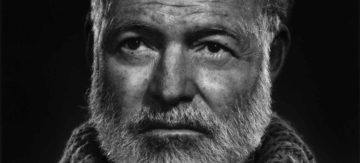Alex Thomas in Literary Hub:
 When I visited Ernest Hemingway’s home in Key West, I took only three photographs. One of his writing studio (which the house’s caretakers claim remains undisturbed), one of the two Coca-Cola machines outside the public bathrooms and one of the little houses built for the dozens of six-toed cats roaming the property. On the roofs of those little houses are placards reading, “Hemingway Home Cats Get Revolution Plus Every Month.”
When I visited Ernest Hemingway’s home in Key West, I took only three photographs. One of his writing studio (which the house’s caretakers claim remains undisturbed), one of the two Coca-Cola machines outside the public bathrooms and one of the little houses built for the dozens of six-toed cats roaming the property. On the roofs of those little houses are placards reading, “Hemingway Home Cats Get Revolution Plus Every Month.”
I took those three pictures because they offered the only visual anecdotes that really interested me about the place: photographic evidence of the continuing myth of Hemingway. A myth so enduring that his former home now has soda machines and his cats have their own medical sponsor. It was bombarding to the point that it almost stifled breathing, the cure was to go to Elizabeth Bishop’s nearby home and sit in the quiet under the palm trees in her front yard.
That myth was built in Hemingway’s lifetime, largely by the writer himself. Ninety-five years after the publication of his first book, The Sun Also Rises, we are still fascinated by the man—so fascinated that, in 2016, when Lesley Blume published Everybody Behaves Badly: The True Story Behind Hemingway’s Masterpiece The Sun Also Rises, it landed on the New York Times bestseller list.
More here.
